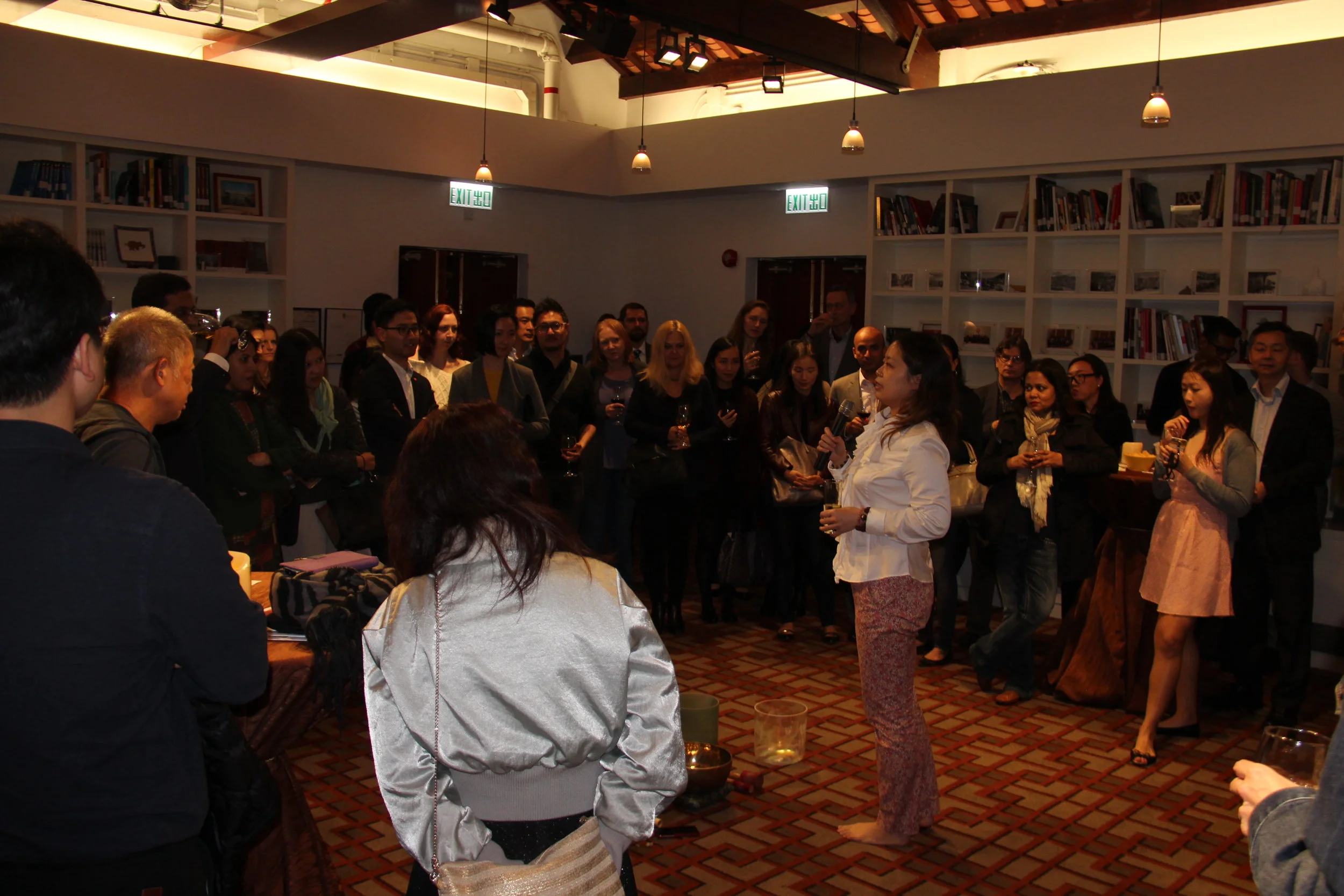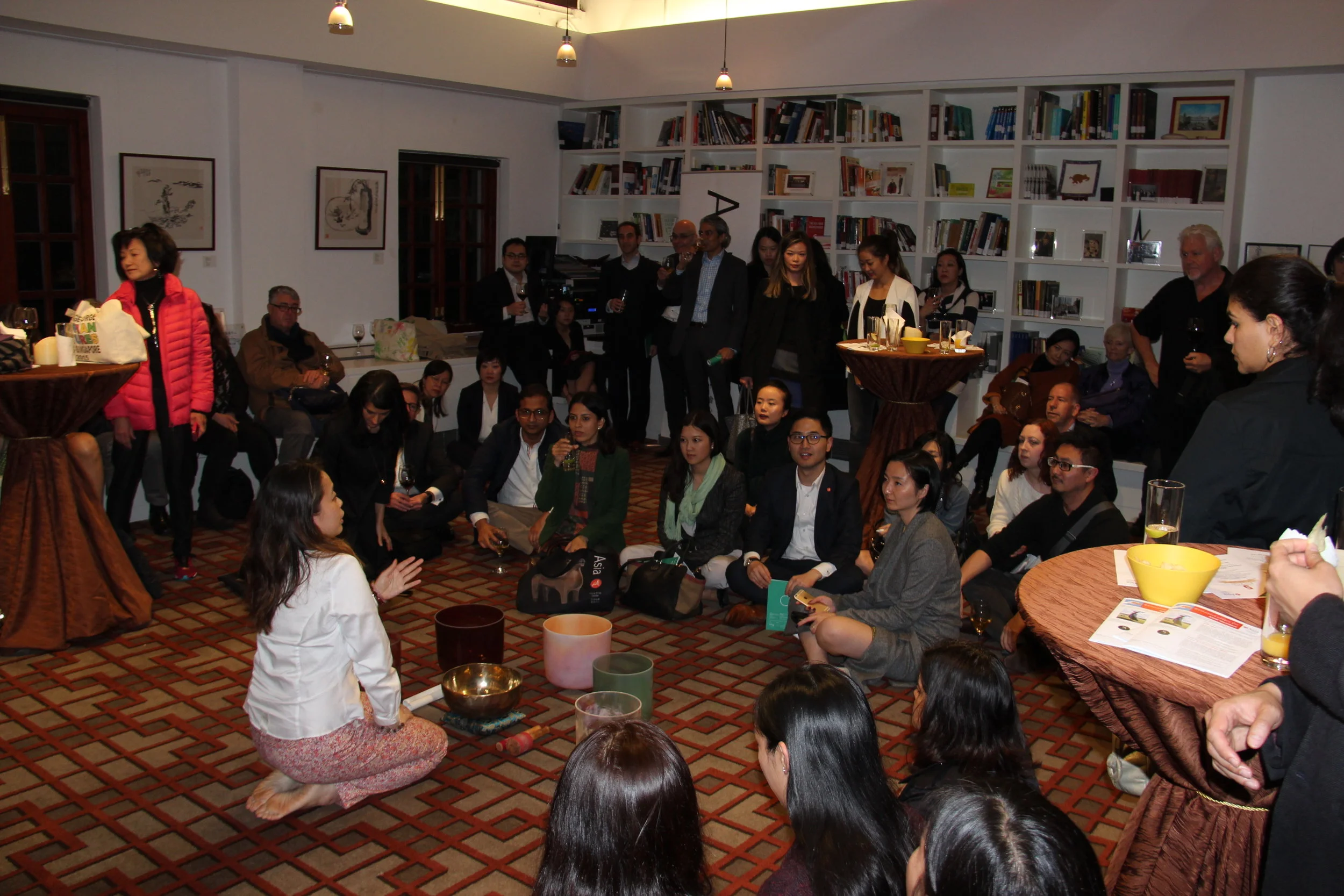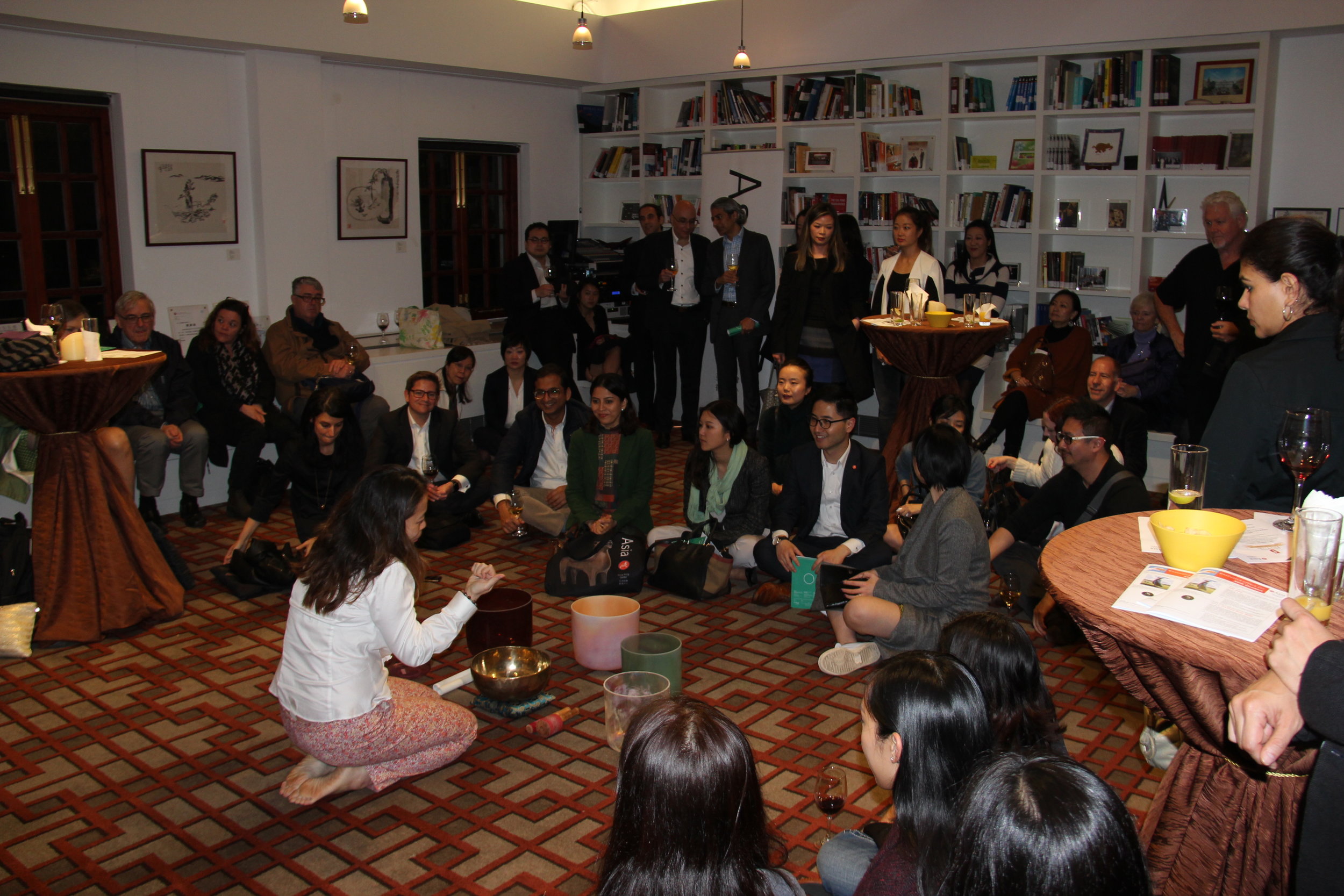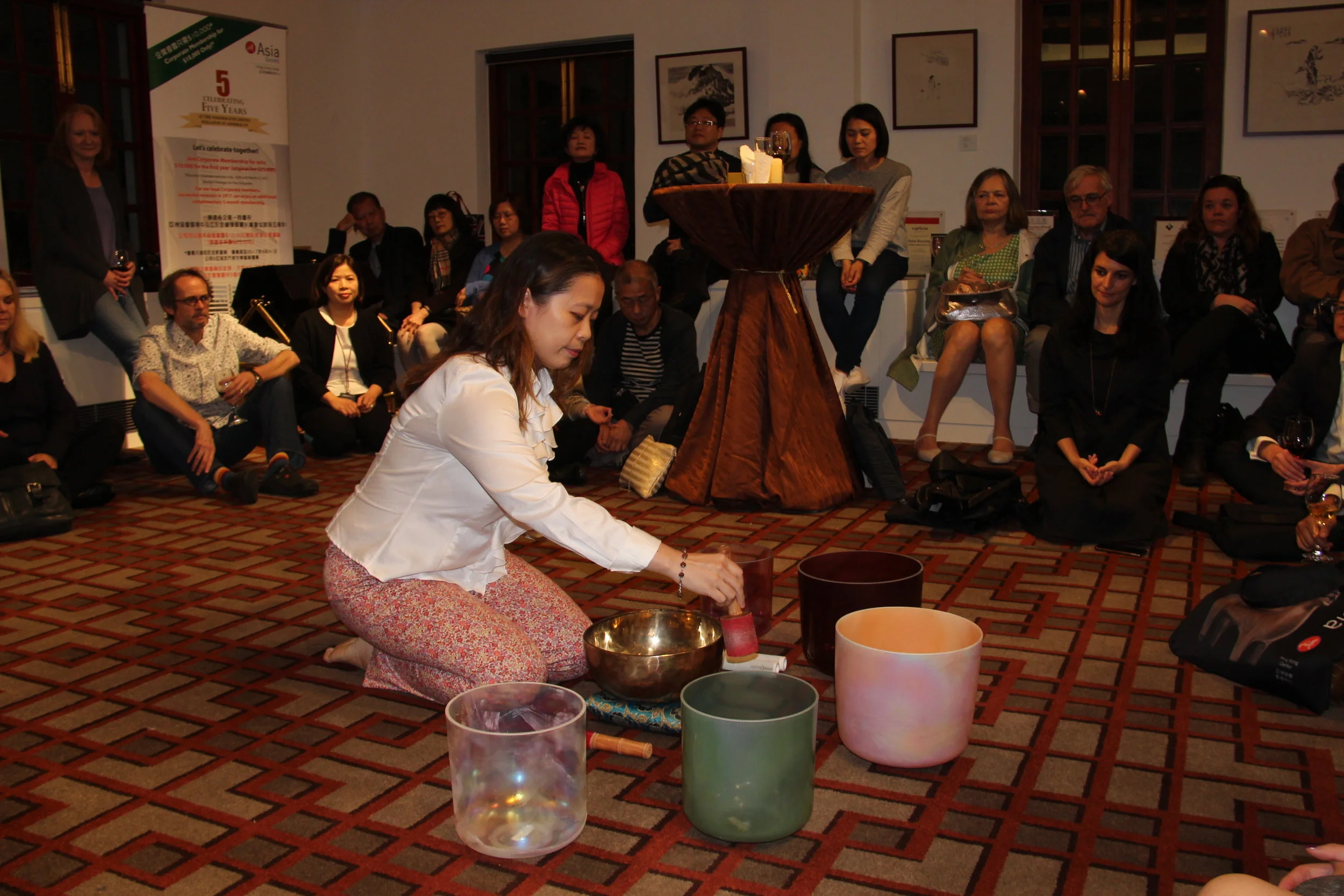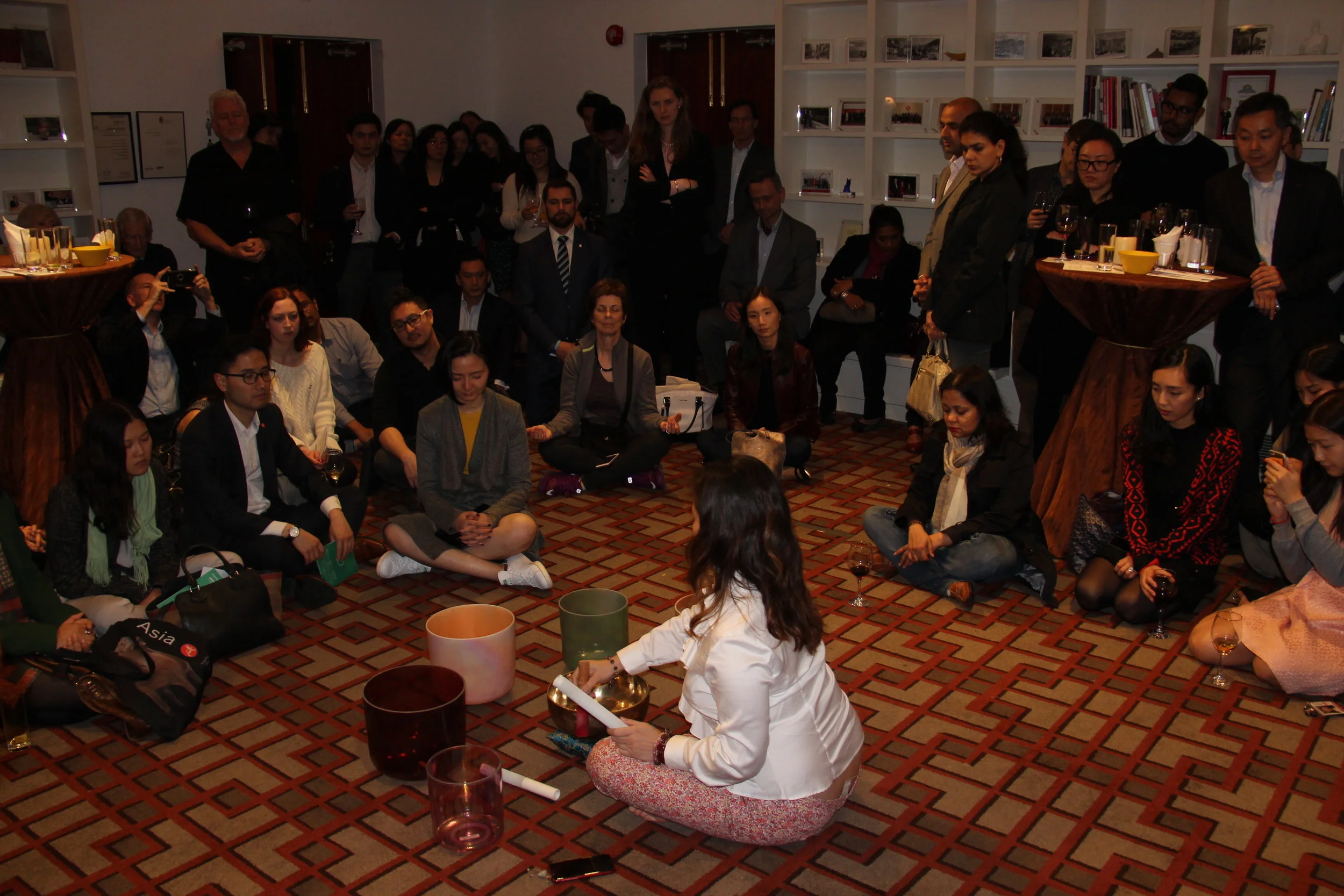Singing Bowls, Meditation & Neuroscience
Q: What do singing bowls, meditation and neuroscience have in common?
A: Mind wellness.
Q: What do singing bowls, meditation and neuroscience have in common?
A: Mind wellness.
In enhancing our wellbeing and quality of life, the first thing that we should address is the wellness of our mind. As it happens, mindfulness and meditation are the simplest approaches to maintain and sustain such wellness.
We have been conducting singing bowls sound baths as part of meditation sessions, on-site or off-site of Luxe Nova Lifestyle Studio. From the feedback of the participants, it has started to show us the common effects of the sound vibration, including:
It can stop the mind from wondering off and quieten the cluttered thoughts.
It creates an invisible blanket around the body to help it to slow down.
It relaxes the participants almost immediately, even though they have remained aware of the surrounding environment.
It is energizing – physically and mentally.
Many felt restful after the session.
Indeed, it is satisfying to watch the participants getting the immediate benefits from a session of singing bowls sound bath. At the same time, it has caused me to look further into the findings in neuroscience.
Traditionally, Tibetan singing bowls have been used for healing and meditation purposes. According to the traditional method, there are some specific requirements in the making of a singing bowl. For instance, each bowl must contain 7 types of metals: Gold, Silver, Copper, Iron, Mercury, Tin and Lead. Each metal is associated with one planet.
It is understood that each planet relates to various parts of our energetic anatomy – for instance, our chakras. Through sound vibration from each metal and the combination of these metals, our body get the healing physically and energetically.
Below is a table showing the relevant association:
It is evident that the sound vibration can filter the cluttered thoughts and calm the mind and body. When singing bowls (whether Tibetan or crystal bowls) are incorporated into a meditation session, the effect and benefit of the meditation are enhanced immediately.
There are tons of research on the correlation between meditation and our brain – in particular, what meditation can do to our brain, so that our quality of life is enhanced.
Here are a few interesting findings about our brain:
Neuroplasticity. Throughout our life, our brain has this amazing ability to reorganise itself by forming new connections between neurons and even growing new neurons in response to thoughts and experiences.
Relaxed egos. A study from Institute of Psychiatry, London, has shown with MRI scans as to how our brain activities change during the meditation. For instance, the front area of brain, which is associated with self-centeredness and egos, becomes relaxed during meditation.
Increased self-awareness. Another group of researchers (associated with Harvard) have also found that after their subjects have practiced a small doses of mindfulness mediation daily over a period of 8 weeks, they have found an increase in the gray matter in the area of the brain associated with self-awareness, compassion and introspection. They have also found a decrease in the gray matter in the area of the brain associated with stress and anxiety.
Rewire the brain’s default mode network. The default mode network of the brain means the network of active brain regions when we are awake. When this default mode network is firing up, it means that we are thinking about ourselves, worrying about what others’ perception of “me”, thinking about the future, regretting the past etc. In short, we stop focusing on the moment of “now”. A study from Yale has found that when people meditate, this default mode network is switched off. It also shows that people who meditate regularly have rewired this network, so that they focus more on the present moment.
Supposedly, with these scientific evidence, it should provide more comfort to you (the readers) and encourage you to meditate more regularly.
It is nice if you can meditate for a long time or even go on regular Vipassana meditation retreats. Frankly speaking, this is an ambitious goal and more likely to remain as an aspiration for many people.
The more realistic and achievable goal is to create a new habit of doing meditation regularly. All it takes is to be simple and spend as little as 5 minutes a day to meditate. When you do it regularly (or even better, daily), you will definitely notice and feel in yourself the changes.
Recently, we had the opportunity to do a singing bowls demonstration to the members of the Asia Society Hong Kong. It was a lovely evening to share with so many people the beauty and power of these singing bowls. Although the demonstration was a very short one, the feedback from the guests were similar – especially that they felt relaxed very quickly and some even felt energised.
And the best comment of the night was from a guest who is a professional musician and he called the sounds from these singing bowls “the essence of music”. To me, it was a beautiful encouragement to continue sharing my love and passion.
Contributor: Stephanie Luo
Some snaps from the Asia Society Hong Kong Members' Event
Tea is the essence of Mother Earth’s Wisdom
“From the dawn of time, man knew that in order to stay alive he must observe, understand and respect Mother Earth, who nourishes him.”
“From the dawn of time, man knew that in order to stay alive he must observe, understand and respect Mother Earth, who nourishes him.” ~ anonymous
Tea leaves hold all the beautiful elements and nutrients coming from the Sun and the Mother Earth. Each element is a wisdom, gently nourishing our mind, body and spirit. Tea is a catalyst for mind-body-spirit connection.
However, with the climate changes at hand – which is a real issue – the quality of teas gets tainted as well as the harvest of good quality organic teas is shrinking. When we start drinking lessor quality teas, our mind, body and spirit become less nourished. These adverse changes to the quality of the soil get absorbed by the tea trees and stored in the tea leaves. Naturally, over a period of time, our body would get affected as a result.
So, why should we consume organic teas?
All premium loose teas are hand-picked. The harvest depends on the geographical locations (e.g. in the mountain or valley) and the surrounding climate. The fresh tea leaves then go through withering, so that the moisture will be reduced and ready for the processes to come.
During the production process, tea is never washed. The harmful chemical residues (e.g. chemical fertilizer or pesticide) remain attached to the tea leaves. When infusing the tea leaves in the tea pot, these residues would be released or activated through heat and into the tea. Naturally, when we consume such tea, the toxins are ingested by our stomach, liver and kidneys. At the same time, these chemicals remain in the soils where the tea trees are grown and the surrounding environment.
Aside the fact that organic teas can provide us with the full health benefits to our own body, by purchasing and drinking organic teas, we are supporting organic farming and in turns we are taking part in environmental protection.
Being in an organic tea estate is a real treat to our senses – it contains a multiple of cultivations and biodiversity. Aside the tea trees, one sees other plants and trees like cinnamon trees, apple trees, grape vines, bee hives etc. The plants take part in the creation of compost, repelling parasites as well as in the fight against soil erosion. The farmers incorporate many natural and herbal solutions to fight against diseases, insects and vermin of all kinds. These solutions include essential oils, cow urine, nettle liquid manure etc. The organic fertilizers and various minerals are also applied to balance the soil equilibrium where necessary. In short, it is a happy place to be.
When we drink the organic tea from such a place, we are taking in the essence from this happy place. Personally, I often can visualise the place where the tea comes from while drinking it - the sun, rain, grass, tree, butterfly, birds, bees...etc. Being in the urban city, it is a beautiful escape, even just for a brief minute!
Note: all the photographs shown above are from Les Jardins de Gaia, taken at the relevant estates where the teas are from.
Author: Stephanie Luo
Tea is the aphrodisiac for our brain
Each of these teas came from the place where organic farming was the tradition. It is raw and authentic – a place where people have no care about the organic labelling or any labelling at all. Its quality speaks for itself.
Recently, I have been digging into my collection of precious vintage teas. These vintage teas were harvested at least 30 years ago. What makes them so precious is not the age but the love, passion, care and respect for the Mother Nature behind the growing of the tea trees and making of the tea – i.e. the stories of the people, the teas and the locations.
Each of these teas came from the place where organic farming was the tradition. It is raw and authentic – a place where people have no care about the organic labelling or any labelling at all. Its quality speaks for itself.
So, when it comes to drinking these vintage teas, I naturally want to pay the homage by creating a sacred space to brew and taste the tea with certain ritual.
First, I find or create a space that is free of clutter. It can be as small as an A3 size table matt. Then I start decorating this defined space with the tea pot, cups and other accessories. There are some recommendations on how you can organise this scared space. However, the importance is to make this sacred space as aesthetically pleasing as you wish.
Once this is set up to my heart’s desire, I rinse all the tea pot and cups with the hot water. Next, I pour the tea leaves into the empty tea pot (which by now should be warm) and gently shake the tea pot to allow the tea leaves to shift inside the pot. The mild heat inside the tea pot can stimulate the tea leaves to release the aroma.
At this point, I usually take a deep breath of this aroma into my lungs. As the aroma moves inside my body, I can sense my brain cells starting to tingle all senses. Sometimes I can identify from the aroma elements about the tea and its origin (e.g. forest, flower, soil, air etc.).
While this sensual experience lingers, I pour the hot water and brew the tea*. With the vintage tea, I would rinse the tea leaves with hot water first and then brew the tea. For the first and second brew, it takes about 30 seconds to 1 minute. From the third brew onwards, the time of brewing gets extended a bit longer and the temperature of the water is higher – so to allow the water to sip deeper into the leaves and extract the flavours.
When the tea is ready, I sip and let the tea linger in my mouth for a bit – in the same way as wine tasting. In this stage, I get to taste the deeper layer of the tea aroma. After swallowing the tea, I would sit in silence and let the after-taste to surface. Each tea has its own tempo and tickles different part of our body. This is when I start to connect deeper.
This whole ritual is effectively a form of meditation or mindfulness practice. It would be a lie if I claimed to enter into the Samadhi all the time! The connection can vary and depend on the condition I am on the day. Sometimes this is a sacred space where my focus and awareness are enhanced – both in life and in work. The quieter I become, the more distractions get stripped away. In turns, I gain the clarity and can stay on track with my goals.
“How long will this whole process take?”, one may ask. It can be as short as 10 mins to 1 hour or more. It is entirely depending on how you want to manage your time.
For someone who is completely new to this, I would suggest starting with something simple. A simple 10-minute tea time can be done with brewing some tea leaves in a tea cup or bowl. If you have 30-minute to spare, you can set up your sacred place more elaborately.
To get to know more about tea tasting and tea meditation, you can start by finding a 10-minute slot for yourself each day and repeat this routine consecutively for 21 days. In that period, remember to have fun to experiment with different types of teas and see what you get out of it each time.
*The temperature of the water will depend on the type of tea chosen. It is useful to ask the person who sells you the tea. Otherwise, if such information is not available, the general rule goes like this:
Black Tea, 90~95°C
Oolong Tea, 80~90°C
Green Tea, 75~85°C
Rooibos / Herbal Tea, 90~95°C
Making and drinking tea is an experience and pleasure. Have fun with experimenting with different approach and enjoy each moment.
Author: Stephanie Luo





